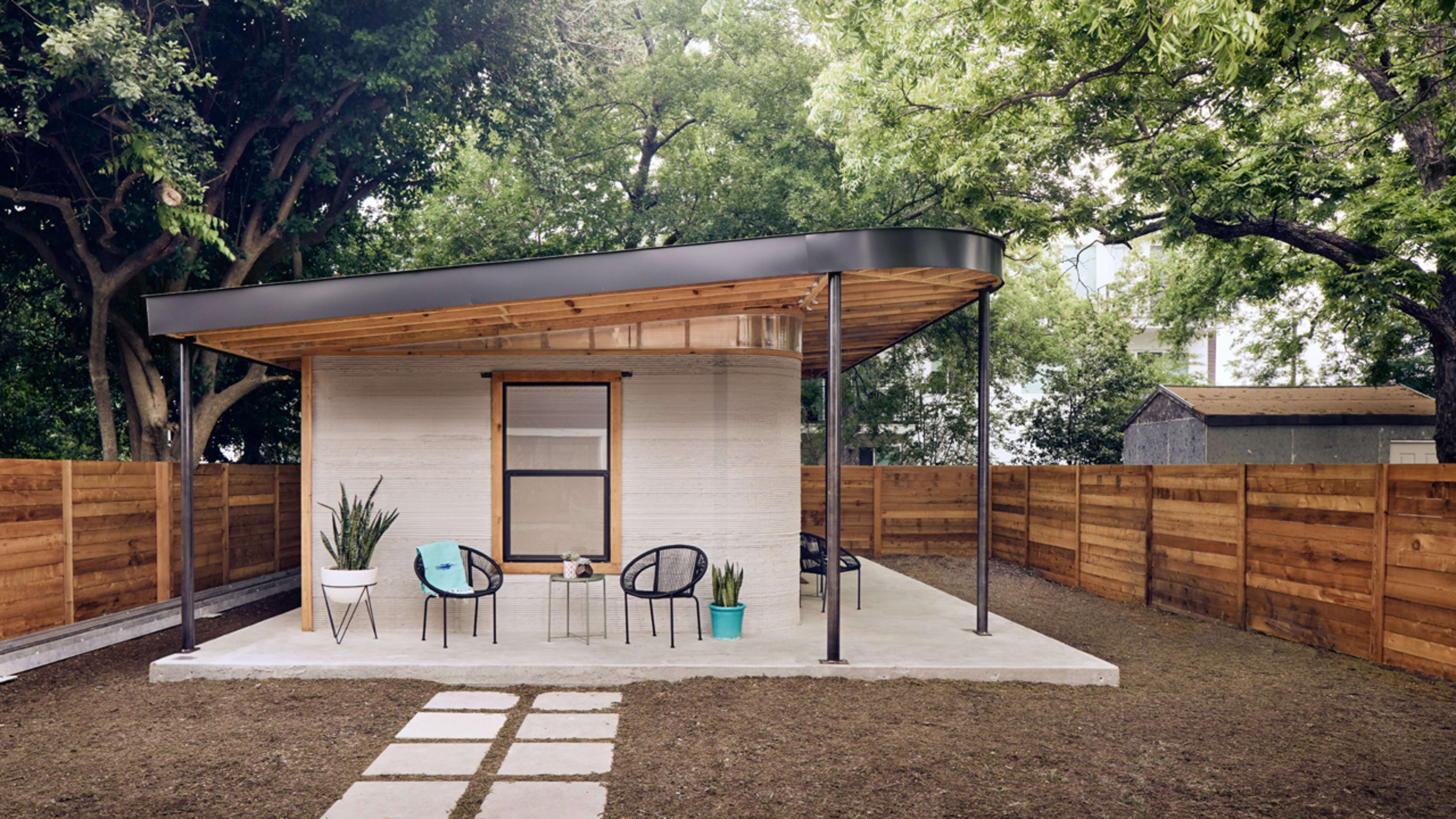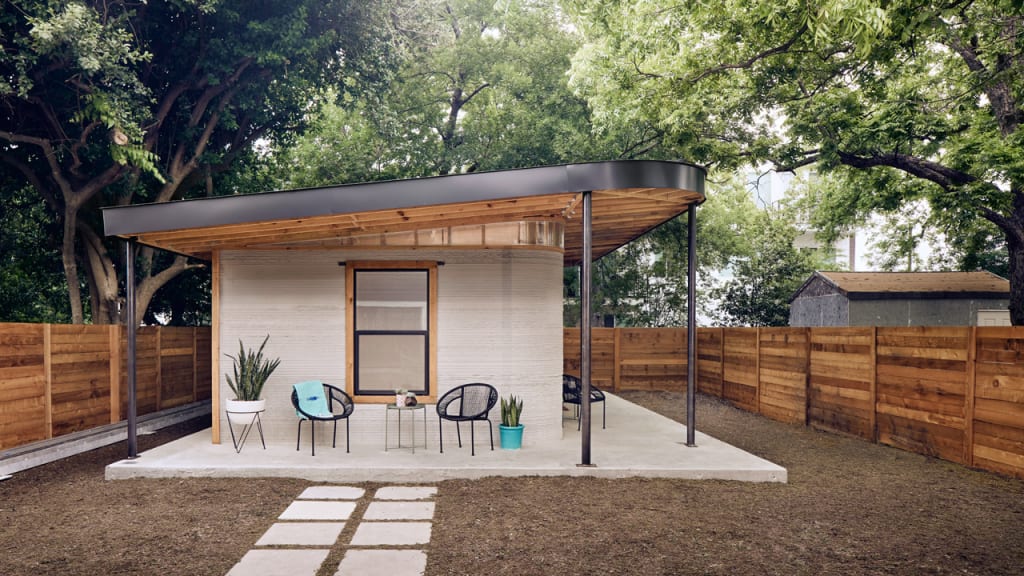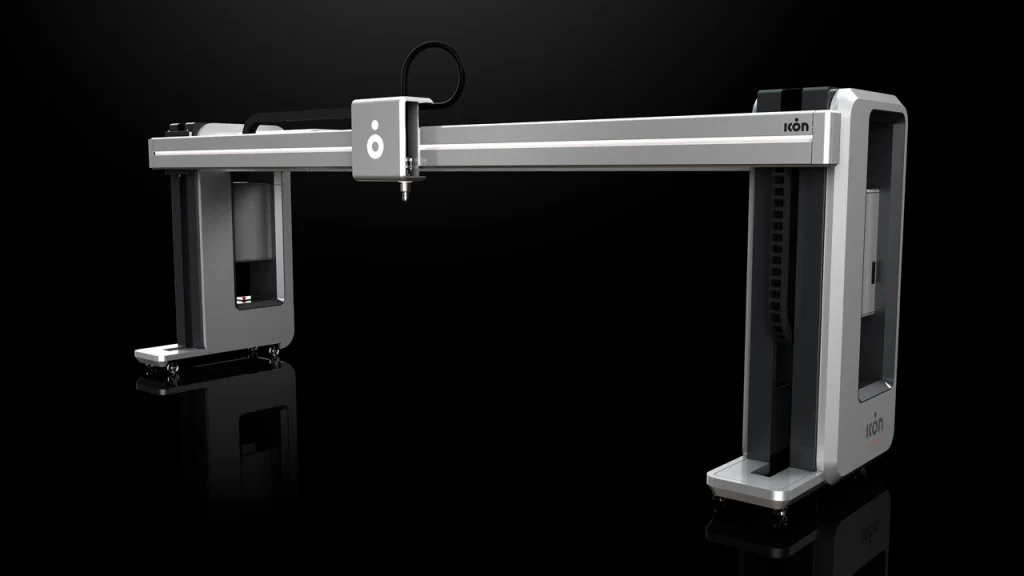Over the past year, in a lab in Austin, a team of engineers and materials scientists tweaked and tested the design of the “Vulcan II,” a massive, 33-by-11-foot machine that can 3D print the frame of a small house in less than a day. Later this year, it will begin printing a neighborhood of more than 50 homes.
The new neighborhood–the first of its kind in the world–will be built in a semi-rural part of Latin America for families who earn less than $200 a month. “We’re bringing very futuristic technology to the families that need it most first,” says Brett Hagler, CEO and cofounder of New Story, a Silicon Valley-based nonprofit that is working with Icon, the Austin-based construction tech company that developed the new machine.
New Story, a startup founded in 2014, works on the problem of how to quickly build housing for those living in extreme poverty. In Haiti, where progress to rebuild after the 2010 earthquake was painfully slow, the nonprofit developed a new process to build more efficiently. But it realized that the pace of traditional construction would always hamper its ability to address the global need for better housing. After analyzing various options to speed up construction and decrease costs–including prefab homes–the team realized that 3D printing could be a viable solution. In late 2017, they began working with Icon, funding the R&D work necessary to develop the machine.
The Vulcan II builds walls and floors by squirting layers of concrete, and can finish a house in a day or less. Adding a conventional roof, windows, and utilities can be completed a day later. After printing an initial test home in a backyard in Austin in 2018, the team kept refining the design of both the house and the equipment. One addition was a simple interface so that it would be easier to operate. “Something that’s really important to us as an international development organization is the ability for the machine to be operated by local talent,” says Alexandria Lafci, cofounder and head of operations of New Story. (Though the construction process provides fewer jobs per home than traditional building, it offers the chance to learn new technical skills.) Most of the process is automated, including mixing materials. “There was a moment [last week] where our staff was in the lab printing, and we all just sat around for hours–no one did anything–as walls were getting built,” says Jason Ballard, cofounder and CEO of Icon. The printer is designed to be durable enough to be transported to remote locations and to be used outside, continuously, for months or even years.
New Story initially planned to build homes in a community in El Salvador, where it is building hundreds of traditionally constructed homes this year. But as it considered proposals from various local partners and factors such as access to land and the timeline to get permits and install utilities onsite, it ultimately chose to use the technology first in another part of Latin America.
[Image: Icon]
The nonprofit won’t reveal the location yet because, it claims, the intense interest that the technology generates could undermine completion of the project. But the homes, built in a few different floor plans, will help house families who currently get substandard, shack-like housing through their jobs at a local factory. “They work incredibly long hours in pretty dangerous, semi-toxic conditions, and part of their very little compensation is the shelters that they are given,” says Lafci. “Our local partners describe it as almost like modern-day slavery or indentured servitude.” Because housing is part of the job, employees often feel like they can’t leave; the new homes will open up the potential to find new work.
New Story partnered with the design firm Fuseproject on the homes because it believed that high-quality architecture was important. “Very often we as a society are willing to accept ‘less than’ for this type of population: ‘less than’ in quality, ‘less than’ for innovation, ‘less than’ great design, ‘less than’ for the input that families are able to have in their solution,” says Lafci. “Even when populations are seemingly vulnerable, or seemingly will accept whatever is given, that’s not an excuse to not really push to have the highest quality of whoever you’re working with.” In a design workshop a week ago, the families who will live in the homes shared feedback and helped iterate on the plans, chanting, at one point, “Todos somos arquitectos,” or “We are all architects.”
Because the design is currently evolving, the nonprofit is choosing to wait to share renderings publicly. The final cost of the homes is not yet known, though New Story says that it will be substantially cheaper than its low-cost traditional homes, which cost around $7,000 to build. While New Story will fund the houses, the new homeowners will pay for them via a no-interest loan that the new home owners pay back with a monthly fee based on income. The money will go into a community fund for more community improvements over time
Fuseproject, best known for industrial design, has started taking on larger-scale projects, and also recently worked on the design of prefab backyard homes. Founder Yves Behar says that his belief in the potential of 3D printing has grown over time. “I think it’s going to have a fast evolution from novelty to reality,” he says. “There’s a real opportunity for low-cost housing really anywhere. New Story’s focus, obviously, is the developing world. But I can’t stop thinking about Northern California and the tremendous need we have for housing. From a speed standpoint, and from a cost standpoint, I think 3D printed building is going to be a reality.”
In Austin, Icon is partnering with Cielo, a developer, to dedicate one of its printers to the city to be used to build housing for the homeless or other affordable housing. 3Strands, another organization, also plans to use the equipment to build sustainable, affordable homes in the United States. The government mortgage loan company Fannie Mae, which has explored the potential of modular construction to provide affordable housing, is also interested in the potential of 3D printing, Ballard says. But the neighborhood in Latin America will be the first project to build a community of the homes.
“When you print an entire community, and it’s a community that people are living in, it takes it out of the realm of novel and into an actual solution for communities globally,” says Lafci. New Story considers itself the “R&D arm” for the social housing sector; when the first community is constructed and proven, it plans to begin to share its learnings for governments and other nonprofits to use. “This next stage will be getting these machines into the hands of as many other organizations that can help end global homelessness as possible,” says Hagler.
Recognize your brand’s excellence by applying to this year’s Brands That Matter Awards before the early-rate deadline, May 3.




